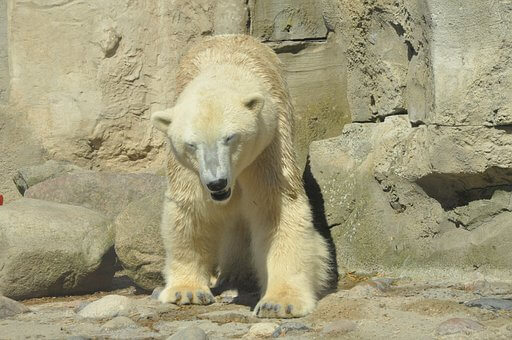Global warming is projected to lengthen the ice-free period in the Hudson Bay, reducing the length of the resident polar bears’ hunting season, according to new research published in Communications Earth & Environment. Under a temperature rise of more than 2.1 degrees Celsius, the authors suggest that the duration of the ice-free period in the majority of Hudson Bay may be longer than the maximum fasting period adult polar bears can survive.
Hudson Bay, in the Arctic Ocean off northern Canada, is seasonally covered with sea ice and home to a population of approximately 1,700 polar bears. During the winter, when the bay is iced over, polar bears live out on the sea ice and hunt seals, their preferred prey. When the ice melts in spring, they come ashore and then fast throughout the ice-free period over the summer, before returning to the sea ice in the autumn. Over the past three decades, the Hudson Bay area has warmed by more than 1 degree Celsius, which has led to the ice-free period lengthening from approximately 120 days to approximately 150 days. As polar bears in the bay rely on the sea ice to hunt, the lengthening of the ice-free period may reduce both their survival rate over the fasting period and their reproductive success during the next hunting period.
Julienne Stroeve and colleagues analysed predictions from the IPCC’s Coupled Model Intercomparison Project 6 (CMIP6) models to estimate future changes to the ice-free period in the western and southern Hudson Bay areas, where declines in the polar bear populations have already been recorded. Polar bears are thought to be able to safely survive an ice-free period lasting between 183 and 218 days. The authors estimated that the ice-free period could extend beyond the 183-day limit in the western and southern Hudson Bay areas if global warming exceeds 2.1 degrees Celsius and 2.6 degrees Celsius, respectively. In addition, they estimate that seasonal ice-melt is likely to occur earlier in the spring. This may reduce the reproductive success of the bears as it could shorten the nursing period for cubs, which are typically born between November and January.
The authors stress that the Hudson Bay polar bear population is most likely to survive if we limit global warming to no more than 2 degrees Celsius above pre-industrial levels.


